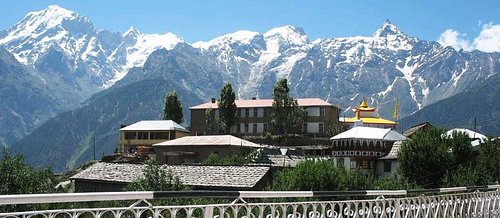- Home
- Tourism in India
- Hill Stations in India
- Dharamshala Tourism
Dharamshala Tourism
Dharamshala Tourism
Quick Facts
Country: India
State: Himachal Pradesh
District: Kangra
Elevation: 1,457 m
Best time to visit: October to February and March to June.
Tourists Places: Mcleodganj, ST, John’s Church, Bhagsunag falls, Namgyal monastery, war memorial, Dharamkot, triund, Dal lake, Indrahar Pas, Dalai Lama temple, Bhagsu falls, Kunal Pathri temple and many more.
Here are quick links for within the page.
Update on coronavirus in India
Dharamshala is a beautiful district located in the Kangra district of Himachal Pradesh, India. Located at the foothills of Himalayas the place is famous for its serene environment and natural beauty. It is the winter capital of Himachal Pradesh. Being located on the upper part of Kangra Valley, Dharamshala is surrounded by dense coniferous forest consisting of Deodar cedar trees. The city is divided into two parts. Lower Dharamshala and Upper Dharamshala. Kotwali Bazar and its commercial surroundings are referred as Lower Dharamshala and the upper part is the McLeod Ganj, Dharamkot, Bhagsu Nag, Naddi etc
Dharamshala is one of the major tourist attractions in Himachal Pradesh. Every year thousands of people visit the place to do some trekking, to enjoy scenic beauty. Some of the important tourist destinations include Kangra Fort, Bhagsu Waterfall, Namgyal Monastery, Dal Lake and many more. Visitors can also do some shopping of handicrafts, clothing and other souvenirs. Dharamshala is famous for its mouthwatering cuisine which has many Tibetan dishes like dham, sidu and chha meat.
How to Reach Dharamshala
Dharamshala is easily accessible by rail, road and air.
By air: Kangra airport is the nearest airport. It is around 14 kms from Dharamshala. From there one can hire a cab to reach the destination. There are regular flights from Delhi and some other cities.
By rail: The nearest broad gauge railway line to reach Dharamshala is at Pathankot. The narrow gauge railway line which connects Pathankot to Jogidernagar can be used to reach the town.
By road: Dharamshala is very well connected by road to major nearby cities. Both public and private buses are available from Delhi, Chandigarh, Kullu, Manali, Shimla and other nearby places.
Climate/Seasons
Dharamshala is at an average elevation of 1,457m. The place enjoys a humid subtropical climate.
Summer season: April to June. The maximum temperature hovers around 35 degree Celsius.
Monsoon season: July to September is the monsoon month. The place receives around 3,000m of rain during the season. It is one of the wettest places in the state. The maximum temperature may hover around 30-degree Celsius.
Autumn Season: October and November are autumn months. The weather remains pleasant and beautiful. The temperature may hover around 17 degrees Celsius.
Winter season: December to February is the winter season. The minimum temperature may drop to 1 degree Celsius with occasional snowfall during peak winters. March is the spring season, and the temperature starts to rise slightly.
History of Dharamshala
Dharamshala has a very interesting history. The Katoch dynasty had earlier ruled this region and built the Kangra fort which is a few kms away from Dharamshala. But as time passed, under the treaty of Jwalamukhi, the rulers of the Katoch dynasty were reduced to the status of jagirdars. The treaty was signed in 1810 between Sansar Chand Katoch and Maharaja Ranjit Singh of Sikh Empire. In the early 19th century, the Kangra Valley was annexed by the British and later Dharamshala became a part of British India. It was first used as a subsidiary cantonment.
The British established a cantonment which became an important military center during World War I and World War II. In 1850 the 66th Gurkha Light Infantry was moved from Kangra to Dharamshala. They settled near Bhagsu falls and it was made as a subsidiary cantonment. This further spread into 14 Gurkha Platoon villages. These Gurkha platoons later became Gurkha Rifles. These platoons are named as Dari, Dal Shymnagar, Ramnagar, Khanyara, Sadher, Chaandmaari, Sallagarhi, Sadbari, Yol, Totarani etc. The 21st Gurkha regiment played an important role in World War I.
As months progressed, Dharamshala became a popular hill station for the British to have some respite from the heat of Delhi. In 1905 Kangra valley suffered a massive earthquake which demolished major parts of cantonment and Kangra city. Thousands of people died in this massive earthquake. The Gurkhas rebuilt the town and temples which is acknowledged as 1st Gurkha Rifle Heritage.
In 1959, the Dalai Lama had to flee Tibet and took refuge in India. He was allowed to settle in Mcleod Ganj. in 1960 the Central Tibetan Administration, also referred to as the government in exile and Namgyal Monastery was established in Dharamshala. Since then, Dharamshala has become an important place for Tibetans and home to several Tibetan institutions including the Library of Tibetan Works and Archives.
Today, Dharamsala is a popular tourist destination, known for its scenic beauty, vibrant culture, and spiritual significance. It is also a center for education, with several schools and universities located in the town.
Places of Interest in Dharamshala Tourism
Dharamshala has many places to visit. Dharamsala is a popular tourist destination in Himachal Pradesh. It is known for its magnificent natural beauty, rich cultural heritage, and spiritual significance. With good weather and greenery all it is surely one of the must visit places in India. The Dalai Lama Temple Complex is the most popular attraction in Dharamsala.
It is the residence of the Dalai Lama and a major pilgrimage site for Tibetan Buddhists. Another important place is Mcleod Ganj. It is famous for its colonial architecture, vibrant Tibetan culture and greenery all around.
Dharamshala is a good trekking place. In Fact it is the starting point for many trekking trails. Being surrounded by lush green forests, scenic mountains, and beautiful waterfalls. You can go trekking in the nearby hills and enjoy the breathtaking views. Here are some of the important places to visit in Dharamshala.
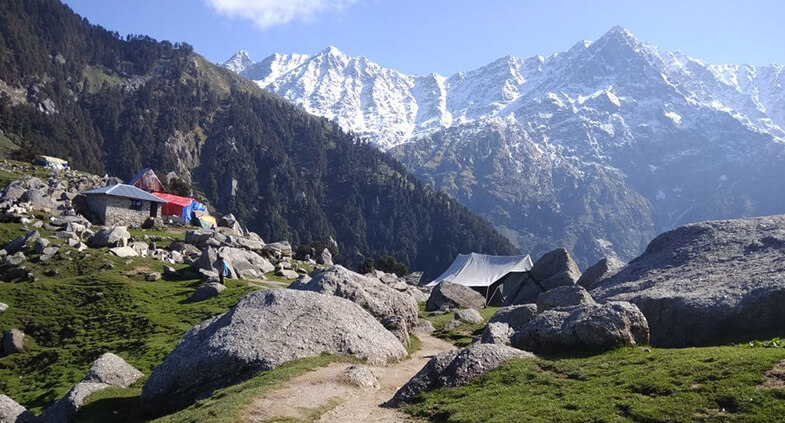
McLeod Ganj:
It is one of the most popular tourist places in Dharamshala. It is the suburb of Dharamshala which is also known as "Little Lhasa” or “ Dhasa” due to the presence of a large Tibetan population. It is the upper part of Dharamshala which is famous for its scenic beauty, pleasant climate and spiritual significance. The place is located at an elevation of 2,082 m in Dhauladhar range and is the home for his holiness Dalai Lama.
The place is named after Sir Donald Friell Mcleod who was the lieutenant Governor of Punjab. One of the major attractions of Mcleod Ganj is the Namgyal Monastery which is considered as the largest temple located outside Tibet. Another important attraction is the Tsuglagkhang Complex which houses the Dalai Lama's residence, a temple and a museum. Other than this the place is also famous for Gompa Dip, the Library of Tibetan Works and Archives, Gangchen Kyishong, Nechung Monastery and many more. The town is also famous for its trekking and hiking trails, which lead to various scenic spots such as Triund Hill, Bhagsu Waterfall, and Dal Lake. McLeod Ganj also offers a wide range of food from restaurants offering Tibetan, Indian, and international cuisine.
McLeodGanj is a popular destination for tourists seeking a blend of natural beauty, spiritual significance, and cultural diversity. One can also indulge in some shopping from the Tibetan market. The nearest airport is the Kangra airport.
Dharamkot
Another popular hill station in Kangra district of Himachal Pradesh. It is around 14 km from the main town of Hill station. It is one of the important destinations for backpackers and trekkers who visit McLeod Ganj. As the place is located on a top it offers a stunning view of the surrounding valleys and mountains. Dharamkot also has Vipassana meditation centre, Dhamma Sikhara and Tushita Meditation Centre for the study and practice of Buddhism.
Dharamkot is famous for its trekking trails which takes you to the beautiful scenic spots such as Triund Hill, Kareri Hill, Bhagsu Waterfall. The trek to Triund starts from Gallu Devi temple in Dharamkot. It takes around 4-5 hours to complete a stretch of 11 kms. The village has several cafes and restaurants that serve a variety of cuisines including Tibetan, Indian and International.Overall, Dharamkot is a quiet and peaceful place which offers a perfect getaway from the hustle and bustle of city life. It is an ideal place for those seeking solitude, spiritual growth, and outdoor adventure and to enjoy the natural beauty by doing some trekking.
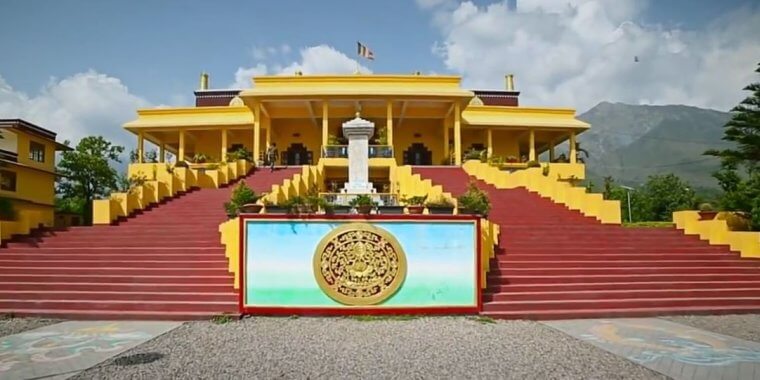
Namgyal Monastery
The Namgyal Monastery is a Tibetan Buddhist monastery located in McLeod Ganj, a suburb of Dharamshala. It is the personal monastery of the 14th Dalai Lama. It is also known as the Namgyal Tantric College and is the largest Tibetan temple outside of Tibet.
The monastery was founded in 1564 or 1565 by the Third Dalai Lama and was later moved to McLeodGanj in 1959 after the Dalai Lama fled Tibet. In 1959 when the Red Chinese invaded Tibet, his Holiness along with hundreds of followers fled Tibet and relocated Namgyal monastery to Dharamshala. Today, the monastery serves as the personal monastery of the Dalai Lama and is the center for the Dalai Lama's religious and spiritual activities.
The Namgyal Monastery is known for its unique and intricate Tibetan Buddhist art and architecture. The monastery is home for several prayer halls, where monks chant and perform rituals throughout the day. The monastery also offers courses on Tibetan Buddhism and meditation.
One of the major events that take place at the Namgyal Monastery is the annual Tibetan New Year celebration or Losar. During this festival, the monastery is adorned with beautiful prayer flags and decorations, and monks perform traditional dances and rituals. Overall, the Namgyal Monastery is an important religious and cultural center for the Tibetan community.
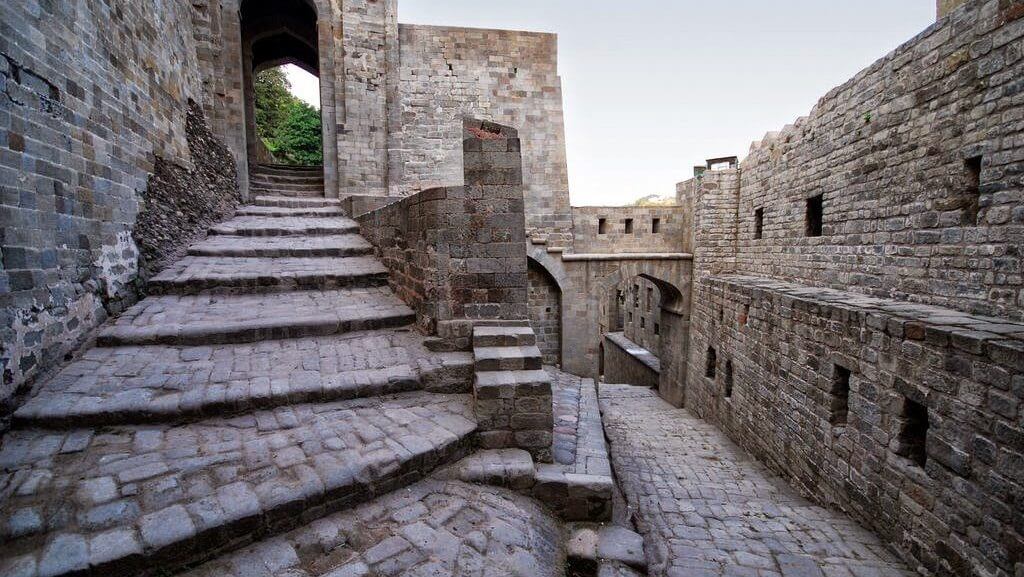
Kangra Fort:
Kangra Fort is a historic fort located in the Kangra Valley around 14 kms from Dharamshala. It is one of the oldest and largest forts in India, dating back to the 4th century BCE. The fort was initially built by the Katoch Dynasty and was later occupied by various rulers and empires, including the Mughals, the Sikhs, and the British. Raja Dharam Chand renounced the rights on the forts and handed it to Mughal Ruler Akbar in 1556. Mughal Emperor Jahangir killed the Katoch king Raja Hari Chand in 1620 and took control over the Kangra kingdom. The Mughals had control over the fort until 1783.
The Kangra Fort is located at the confluence of the Banganga and Majhi rivers, and its location has made it an important military stronghold throughout history. The fort is surrounded by a thick wall and is accessible through seven gates, each with its own name and significance. The entrance to the fort is through a small courtyard between two gates which was constructed during Sikh period. The entrance to the fort is designed heavily with stone carvings after this is the another entrance door which is called as Jahangir Darwaza. Another gate known as Darsani Darwaza is bordered by the spoiled statues of River Goddess Ganga and Yamuna which gave access to a courtyard.
The fort complex includes several temples and palaces, including the Lakshmi Narayan Temple, Ambika Devi Temple, and the Kareri Lake. The fort also houses a museum that showcases the history and culture of the Kangra region.
One of the main attractions of the Kangra Fort is the light and sound show that takes place every evening, which narrates the history of the fort and the surrounding region. The show is accompanied by beautiful lighting effects and music, making it a memorable experience for visitors.
Kangra Fort is a must-visit destination for those interested in ancient architecture and culture. The fort's beautiful location, rich history, and unique features make it one of the most significant landmarks in Himachal Pradesh.
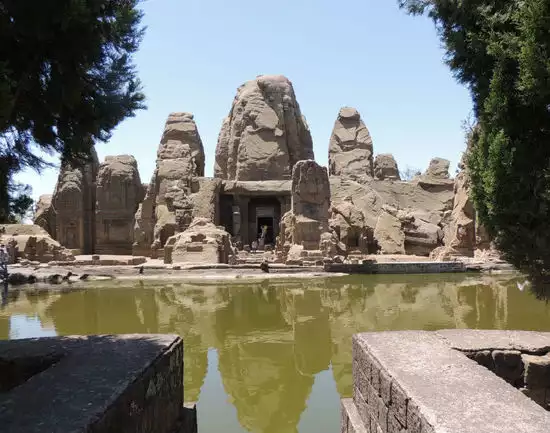
Masroor Rock Cut Temple
The Masroor Rock Cut Temple is a group of ancient temples located in the Kangra Valley of Beas River. The temples here face the Dhauladhar range of Himalayas. It is situated about 32 kilometers from Kangra and about 15 kilometers from Kangra airport. It is around 40 kms from Dharamshala town.
The Masroor Rock Cut Temple is believed to have been built in the 8th century AD by the local rulers of the region. The temple complex consists of 15 rock-cut temples that are carved out of a single monolithic rock. The temples are designed in the Indo-Aryan style and have intricate carvings of various Hindu deities such as Lord Shiva, Lord Vishnu, and Goddess Durga. A major part of the temple is in ruins now and also most part of the temple sculpture and reliefs are damaged and lost.
The entrance has three entrances facing northeast, southeast and northwest. But two are incomplete and also it is believed that a fourth entrance was planned but could not be built. The complex of the temple is on a square grid. The main temple is surrounded by smaller temples.
One of the unique features of the Masroor Rock Cut Temple is the exquisite carvings on the temple walls, which depict various mythological scenes and stories. The carvings are a blend of Indian and Greek architectural styles and are considered to be some of the finest examples of rock-cut architecture in India.
The Masroor Rock Cut Temple is also known for its beautiful location, nestled amidst the picturesque Dhauladhar range. The temple complex is surrounded by a small lake and offers breathtaking views of the surrounding mountains.
Truly, the Masroor Rock Cut Temple is a must-visit destination for those interested in ancient architecture and Hindu mythology. The temple's unique design and beautiful location make it one of the most significant landmarks in the Kangra Valley.
Bhagsu Falls
Bhagsu Falls is a beautiful waterfall located in the small village of Bhagsu, which is situated at a distance of around 2 km from the popular hill station of McLeod Ganj and around 11 km from Dharamshala. The gushing sound of waterfall and greenery all around make it a popular tourist attraction and is visited by thousands of tourists every year.
The waterfall is fed by a stream that originates from the Dhauladhar range of mountains and cascades down a height of around 30 feet into a pool below.
Visitors can take a dip in the cool waters of the pool or just simply relax on the rocks and enjoy the natural beauty of the surroundings. They can also visit the old temple near the fall which is dedicated to Lord Shiva. The area around the waterfall is also dotted with several small shops and cafes that serve local food and drinks.
The best time to visit Bhagsu Falls is during the monsoon season when the waterfall is at its full glory. However, visitors should exercise caution while visiting during monsoon season as the rocks around the waterfall can be slippery and dangerous. Necessary precautions need to be taken while going near the waterfall.
The War Memorial
The War Memorial at Dharamsala is a tribute to the brave soldiers who laid down their lives for the country in various wars and conflicts. Located in the town of Dharamsala, Himachal Pradesh, India, the memorial is a popular tourist attraction and a place of reverence for locals and tourists.
The memorial is located in the pine forest near the entry point of Dharamsala and was built to honor the memory of the soldiers from Himachal Pradesh who died in the service of the nation. The main monument has three curved walls of black marble with names of the martyrs inscribed on it.
It also has a museum that showcases the weapons, uniforms, and other memorabilia used by the Indian Army during various wars. The museum provides an opportunity to the visitors to read and learn about the sacrifices made by our soldiers for the country.
The location of the War Memorial, surrounded by the tranquil beauty of the pine forest, adds to its solemnity and makes it a must-visit for anyone visiting Dharamsala.
Triund
Triund is a small hill station in Kangra district and is a popular trekking destination located at the foot of Dhauladhar range of the Himalayas near Dharamsala. Situated at an altitude of around 2,850 meters the place offers breathtaking views of the surrounding mountains and valleys. The large part of the place has green grass, oak, pine, deodar and Rhodeodaran forest.
Triund trek is one of the most popular treks in Himachal Pradesh. The trek to Triund is relatively easy, making it suitable for beginners and experienced trekkers . The trail is well-marked and passes through dense forests of oak, deodar, and rhododendron trees. One can have stunning views of the snow-capped peaks of the Dhauladhar range.
At the top of Triund, there is a small camping ground where trekkers can spend the night and enjoy the magnificent views of the sunset and sunrise. The camping ground has basic facilities like tents, toilets, and food stalls that serve simple but delicious food.
If one is not interested in trekking then, Triund is also a popular spot for day trips to enjoy the natural beauty and greenery of the place. The best time to visit Triund is from March to June and from September to December when the weather is pleasant, and the skies are clear.
Tsuglagkhang Complex:
It is a place of important significance to Tibetans. It is the official home of the 14th Dalai Lama. The complex holds several buildings, the important being the main temple, museum and a library. It is located in the southwestern end of McLeod Ganj. The main temple has three important deities. The first is the Shakyamuni Buddha, the second being the Avalokiteshvara and lastly is the Padmasambhava. The temple also contains numerous prayer halls and beautiful wall paintings which depict scenes from the life of Buddha.
The museum is home to many of the artifacts which share details of Tibetan art, religious texts, historical objects and many more. The library has a huge collection of Tibetan Buddhists literature and various other texts.
The presence of the Dalai Lama and the Tibetan community makes it a unique and serene atmosphere, making it a must-visit destination for anyone visiting Dharamshala.
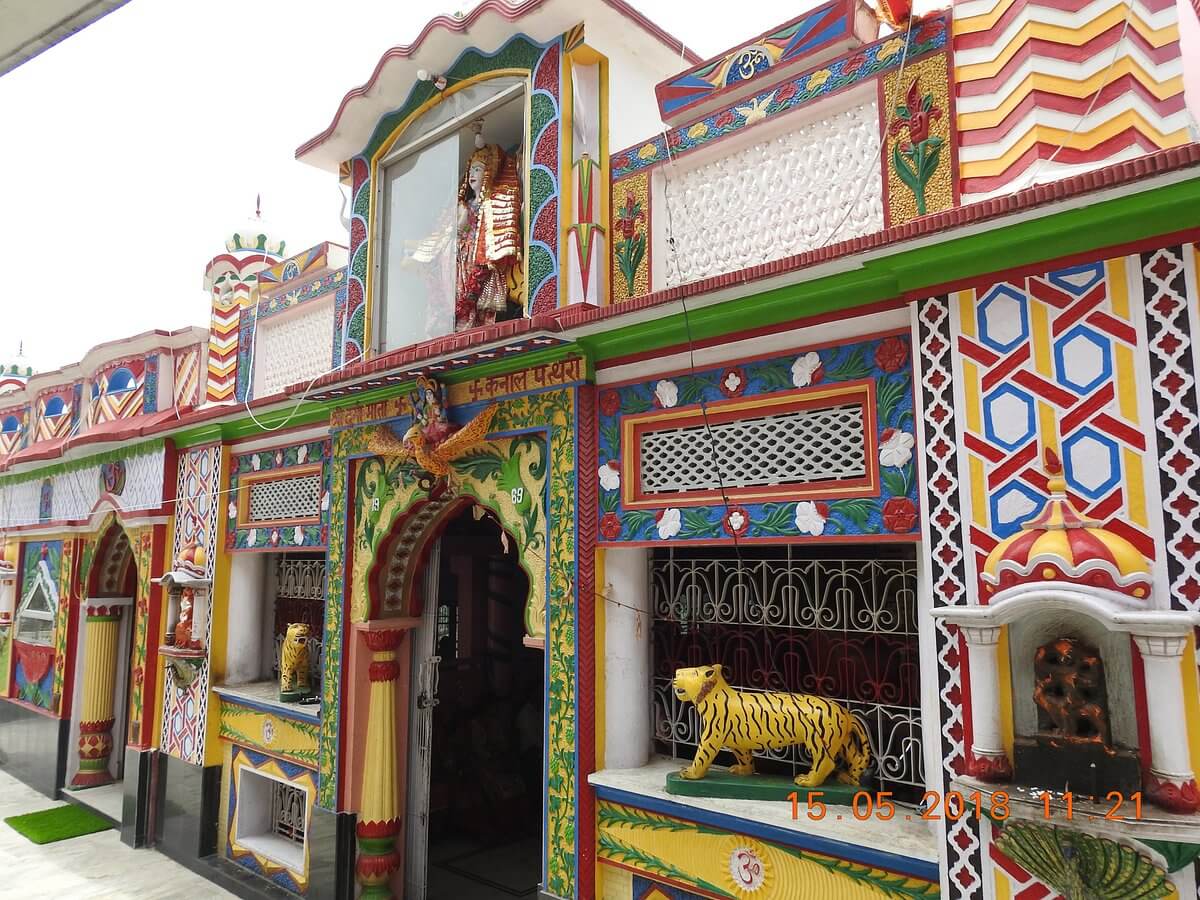
Kunal Pathri Temple:
One of most beautiful Hindu temples located in the Dhauladhar range of Kangra district. It is dedicated to goddess Durga. Surrounded by dense forest and lush green forest, the temple is visited by thousands of visitors every year to seek the blessings of Goddess. The temple is famous for some of the magnificent carvings of gods and goddesses. It is believed that there is a stone inside the temple which always remains wet. Further it is said that the moment the stone dries then there is immediate rain in the place. According to another legend, the Pandavas visited the temple during their exile and offered prayers to the goddess here.
It is one of the oldest temples in the region with stunning views of the surroundings all around the region.
Do share your experience with us here.
Affiliate Disclosure:
If you make any purchase via a link on this site, I may receive a small commission with no added cost to you.
